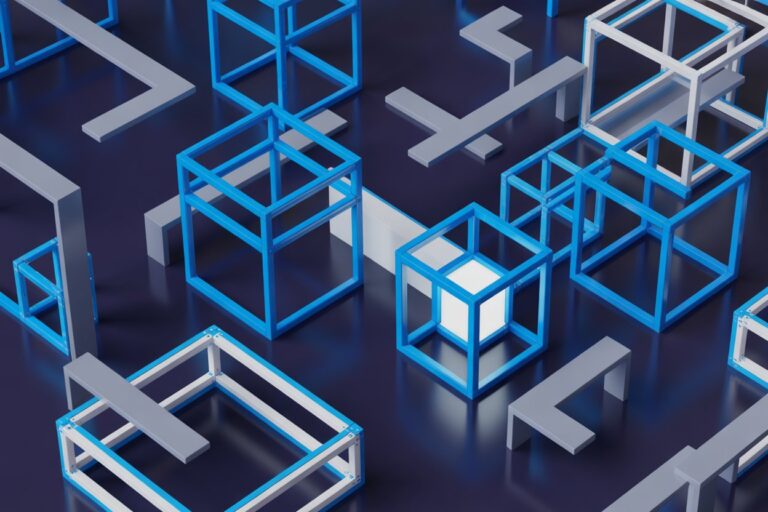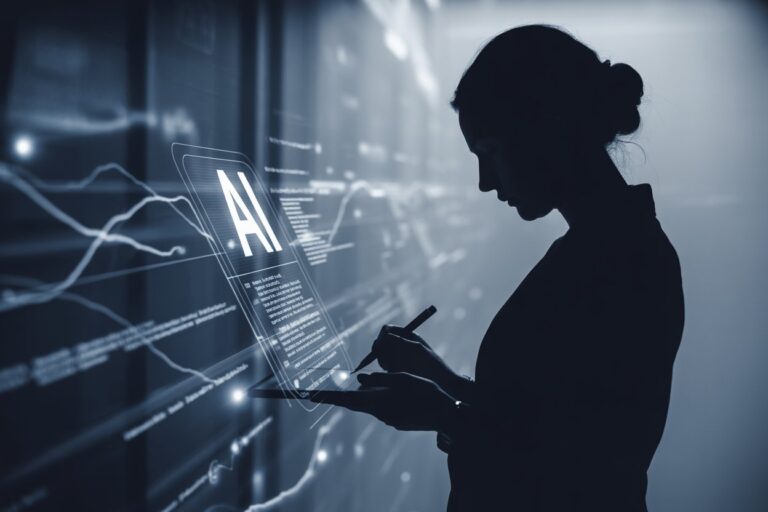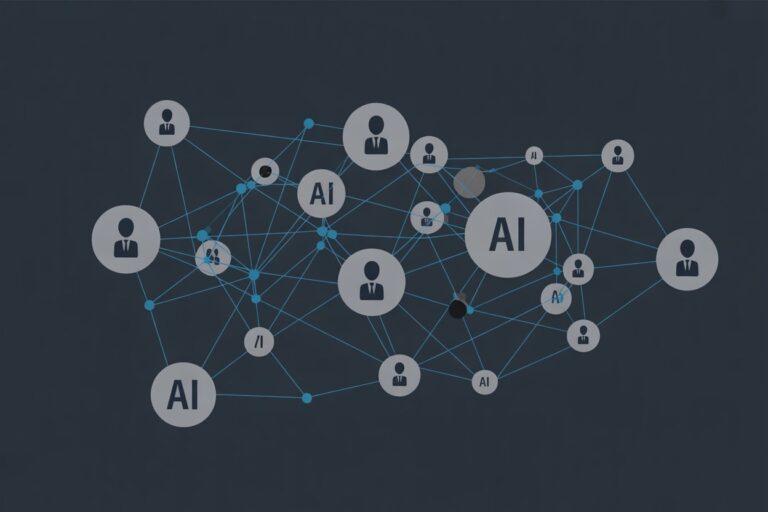Delegating Justice: The Human Limits of Algorithmic Law
Governments have long automated bureaucracy, but never conscience. As artificial intelligence begins managing dockets, summarizing evidence, and drafting opinions, the question is no longer technological but constitutional. Can a system built on human judgment be delegated to code without hollowing its legitimacy? Around the world, courts are learning that efficiency has limits when justice itself is on the line.
Where Assistance Ends and Delegation Begins
Delegation of justice refers to transferring a core judicial function, such as determining guilt, liability, or punishment, to an automated system. That differs sharply from assistance, where software organizes data or drafts text under human supervision. Assistance expands efficiency, while delegation alters sovereignty. When an algorithm’s output becomes binding, it no longer advises; it judges.
Across modern democracies, that boundary is legally fortified. Judicial independence, due process, and accountability all hinge on the idea that reasoning must be human and reviewable. The Canadian Judicial Council (CJC) warns that while courts may use AI for research or drafting, decision-making must remain with judges. The same reasoning underlies judicial guidance in the United States, the United Kingdom, and the European Union, where AI is permitted for analysis and management but prohibited from determining legal outcomes.
A Century of Attempting to Automate Justice
The dream of automated justice predates AI. In the 1920s, legal realists debated whether sentencing grids could replace discretion. By the 1980s, actuarial parole tools promised consistency through data. Algorithms such as COMPAS, adopted by U.S. courts in the 2000s, predicted recidivism using demographic and criminal-history variables. When the Wisconsin Supreme Court upheld COMPAS’s advisory use in State v. Loomis (2016), it drew a constitutional red line: an algorithm may inform but not decide.
That distinction remains the blueprint for AI in justice. Machines can classify and compare, but they cannot weigh mercy, intent, or remorse. The moment a sentence, verdict, or fine depends solely on a machine’s output, accountability evaporates. The history of legal automation shows that efficiency has always advanced faster than ethics, and law has had to pull it back into moral scope.
How Courts Use AI Today
Artificial intelligence now supports every layer of the justice process. The U.S. federal judiciary uses natural language models for opinion search and docket analytics. State courts experiment with AI-assisted transcript review, case triage, and legal research. The PATTERN tool under the First Step Act of 2018 calculates risk for federal inmates, informing early release eligibility. Oversight by the National Institute of Justice ensures statistical accuracy across racial groups.
Internationally, AI functions in similar advisory roles. The EU Artificial Intelligence Act classifies judicial and law enforcement systems as “high-risk,” requiring human oversight and detailed impact assessments. China’s network of “smart courts” integrates AI to assist judges with case management, evidence organization, and draft preparation, but every decision still requires human confirmation and signature. In Singapore, the judiciary launched a generative AI tool in 2024 to summarize case materials for the Small Claims Tribunals, while affirming that judicial orders remain exclusively human-signed. Estonia’s Ministry of Justice clarified in 2023 that it is not developing an autonomous “AI judge,” emphasizing that all adjudicative authority continues to rest with human judges.
Recent developments in 2025 demonstrate both promise and peril. Brazil’s Superior Council of Labour Justice launched Chat-JT in February 2025, a generative AI tool that assists judges and court staff by automating legal research and document analysis. Croatia operationalized ANON in January 2025, an AI tool for automated anonymization of judicial decisions. Morocco’s judiciary has adopted AI tools to assist judges in drafting preliminary judgments and automating documentation for labour and traffic cases. Together, these initiatives illustrate how governments are experimenting with AI in judicial processes while maintaining human oversight at every stage.
Constitutional and Legal Limits
In the United States, full delegation collides with constitutional design. Article III vests judicial power in courts composed of judges who exercise reasoned, reviewable judgment. That power cannot be assigned to a system incapable of moral accountability. Administrative agencies may use automated processes to issue benefits or fines, but judicial review remains the fail-safe. The doctrine of separation of powers therefore blocks non-human adjudication at the constitutional level.
Due process reinforces the same barrier. The Fifth and Fourteenth Amendments guarantee notice, hearing, and appeal before a human decision-maker. If a defendant cannot confront or understand the logic of an algorithm, procedural fairness is lost. The Organisation for Economic Co-operation and Development (OECD), in its September 2025 report “Governing with Artificial Intelligence,” warns that AI in justice must operate under “explicit human control” and with transparent explanations capable of review.
Judicial Ethics and Institutional Oversight
Judicial ethics codes are evolving to address automation. The American Bar Association’s Formal Opinion 512 (July 2024) directs lawyers to maintain transparency, competence, and human review when using AI. The opinion emphasizes that lawyers must understand AI capabilities and limitations, protect client confidentiality, and ensure independent verification of AI outputs. Courts apply the same logic to judges. The Courts and Tribunals Judiciary of England and Wales permits AI to summarize documents but forbids unverified reliance on outputs. Canada’s CJC guidance similarly treats AI as a support tool, not a substitute.
Across the United States, judicial task forces are studying these boundaries. The Council on Criminal Justice launched a Task Force on Artificial Intelligence in July 2024, chaired by former Texas Supreme Court Chief Justice Nathan Hecht. State-level groups in California, Georgia, and Utah are drafting frameworks for responsible adoption, emphasizing explainability and public trust. The National Center for State Courts reported in May 2025 that courts need more AI governance guidelines before adopting AI in operations. Together they signal an emerging consensus: AI can assist, but it cannot decide.
Administrative Delegation and Its Limits
Governments have shown greater comfort with automation in administrative contexts, where liberty is not at stake. Canada’s Directive on Automated Decision-Making requires algorithmic impact assessments, human oversight, and auditability for public-sector AI. The directive, updated in June 2025, emphasizes that high-risk systems affecting legal rights require approval from deputy heads and cannot operate without human involvement. The United States has followed similar paths in immigration and social benefits adjudication, where algorithms screen cases but humans finalize results. These systems still raise concerns about bias and appeal rights but remain distinguishable from judicial delegation.
The distinction is practical and constitutional. Administrative adjudicators operate under legislative authorization and can be corrected by courts. Judges, by contrast, are constitutional officers with independent duty to reason and explain. Delegating that duty to code would dissolve the legitimacy of the judgment itself.
Why Technology Cannot Replace Judgment
Technically, AI could approximate many judicial tasks. Large language models can parse precedent, summarize evidence, and predict likely outcomes. Machine learning tools already identify inconsistencies in testimony and optimize case routing. Germany’s Frankfurt District Court uses the “Frauke” AI system to assist with passenger-rights cases, automating portions of data extraction and case processing. Yet prediction is not adjudication. Courts do not decide cases by probability; they decide them by proof, context, and persuasion. The ability to imitate legal reasoning does not equate to the authority to render justice.
Scholars compare the current moment to earlier mechanization of law. The shift from jury discretion to sentencing grids, or from parole boards to actuarial scores, aimed for uniformity but often produced new inequities. Delegation to AI risks repeating that pattern at scale. Accuracy alone cannot legitimize a verdict if the process lacks reasoned accountability.
Ethical and Philosophical Dimensions
Philosophers and jurists have long argued that judgment is not computation but conscience. Hannah Arendt described judgment as the capacity to think from another’s standpoint. Lon Fuller saw law as a moral enterprise, requiring human intent to give rules meaning. A machine may follow procedure flawlessly, yet never engage empathy or moral reasoning. That difference separates compliance from justice.
The EU AI Act’s explicit ban on predictive-crime systems underscores this moral boundary. Law depends on agency, responsibility, and the capacity for error and forgiveness. Removing the human element would turn justice into administration, efficient but hollow. The legitimacy of punishment or vindication derives not from precision but from the recognition of another human mind.
Global Convergence on Oversight
Across jurisdictions, policy frameworks converge on three principles: transparency, accountability, and human supervision. The OECD’s 2024 AI Principles, updated in May 2024, recommend algorithmic registries and public disclosure of data sources used in judicial tools. The EU mandates impact assessments for high-risk AI. Canada and the United Kingdom require that any AI system influencing legal outcomes be explainable and reviewable. In the United States, judicial councils are exploring standards modeled on the NIST AI Risk Management Framework, applying scientific transparency to legal processes.
Spain’s National Policy on the Use of AI in the Administration of Justice, approved in June 2024, establishes that AI can support but not substitute jurisdictional decision-making. The policy requires algorithmic audits when AI impacts judicial functions, with oversight by the General Council of the Judiciary to safeguard independence.
These initiatives reflect not technophobia but constitutional prudence. Governments are modernizing court administration while reaffirming that final judgment is a moral act inseparable from human agency. The more capable the machine, the more critical the human oversight becomes.
Public Trust and Perception
Public trust in AI within justice systems remains mixed. A 2025 study published in the National Center for Biotechnology Information found that while some participants acknowledged AI’s potential to enhance efficiency, significant concerns emerged regarding bias, transparency, and lack of human empathy. The study, which surveyed 1,800 participants stratified by race and gender, found that Black and Hispanic respondents expressed lower trust in AI-assisted judicial decisions compared to White respondents, reflecting historical disparities in trust toward the justice system.
Many respondents feared that AI tools could inherit biases from their training data, leading to unfair outcomes. The prevailing sentiment was that AI should serve as a supplementary tool rather than the primary decision-maker. Calls for transparency and accountability were recurrent themes, reinforcing that explainable AI and clear audit mechanisms are crucial to public acceptance.
The Future of Judicial Responsibility
Future systems will likely feature “AI co-judges,” automated assistants embedded within judicial chambers. Algorithms will summarize precedent, detect inconsistencies, and flag statutory conflicts. Governments may adopt certification schemes for judicial AI analogous to forensic expert accreditation. The OECD’s September 2025 report suggests countries are moving toward “FAT registers”—Fairness, Accuracy, and Transparency records for AI systems used in justice administration. But every credible model retains a final safeguard: a human decision-maker who reads, reasons, and signs the judgment.
Delegation of justice in the full sense remains incompatible with the rule of law. A court may mechanize its process, but not its conscience. The measure of justice is not the speed of output but the integrity of reasoning. Machines can learn law, but only humans can own it.
Sources
- American Bar Association: ABA Issues First Ethics Guidance on Lawyers’ Use of AI Tools (July 2024)
- Canadian Judicial Council: Guidelines for the Use of Artificial Intelligence in Canadian Courts (2023)
- Council on Criminal Justice: Task Force on Artificial Intelligence (July 2024)
- European Union: Artificial Intelligence Act, Regulation (EU) 2024
- National Institute of Justice: Predicting Recidivism—Continuing to Improve the Bureau of Prisons’ Risk Assessment Tool (PATTERN)
- National Institute of Standards and Technology: AI Risk Management Framework (2023)
- Organisation for Economic Co-operation and Development: Governing with Artificial Intelligence—Justice Administration and Access to Justice (2025)
- State v. Loomis, 881 N.W.2d 749 (Wis. 2016)
- United Kingdom Courts and Tribunals Judiciary: Artificial Intelligence Judicial Guidance (December 2023)
- UNESCO: AI and the Judiciary: Balancing Innovation with Integrity (June 2025)
- U.S. Bureau of Prisons: PATTERN Risk Assessment (First Step Act, 2018)
This article was prepared for educational and informational purposes only. It does not constitute legal advice and should not be relied upon as such. All cases, statutes, and sources cited are publicly available through court filings, government publications, and reputable legal outlets. Readers should consult professional counsel for specific legal or compliance questions related to AI use in the justice system.
See also: Algorithmic Sentencing Gains Ground in Criminal Courts







